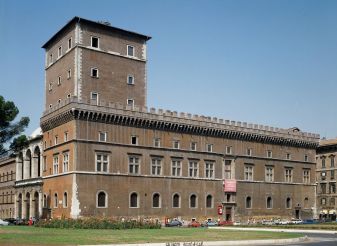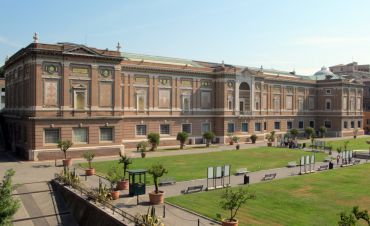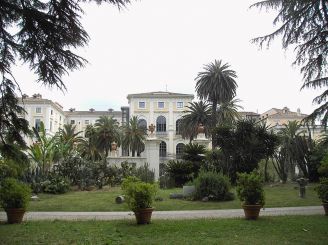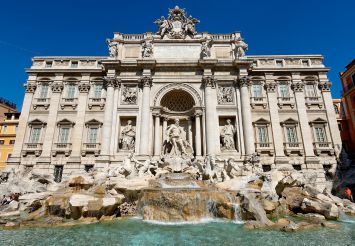Venezia Palace, Rome

Palazzo Venezia is a historical palace in Rome. At different periods it was the residence of the Barbo family, as well as the representation of the Venetian Republic in Rome. Construction was carried out in the middle of the 15th century. The Palazzo is recognized as the first monument of the Renaissance in the Italian capital. It is located in the central part of the city, on Piazza Venezia, to the north of the Capitoline Hill and not far from St. Mark's Church.
History of the Palazzo Venezia
The construction was started in 1455 and it unfolded around the medieval tower in Rome. They built the palace as the residence of Pietro Barbo, the future Pope of Rome. Pietro was born in 1417 in Venice. The patron saint of the city is St. Mark, therefore, when the question arose of choosing a place for the construction of the residence, the decision was not random, and the area near the Basilica of San Marco was chosen. Together with the construction of the palazzo, the basilica was reconstructed according to the design of the famous Italian architect Alberti. The facade of the church was completely redesigned and reconstructed.
The composition of the Palazzo de Venezia consists of two elongated buildings, which are separated by a tower. The construction of the first building was completed in 1464 and coincided with the year of Pietro Barbo's election as Pope. During his reign, the Pope decided to expand the palace, making it more monumental and majestic. Construction of the second building of the palace had lasted for 26 years, and was completed after the death of Pope Paul II.
Interesting fact: the medieval tower, which divided the two buildings of the palace, is known as the tower of the Natrix – it got this name thanks to the serpentine staircase that leads to the crenellated roof.
In the 16th century the building of the Palazzo Venezia underwent a new reconstruction. Then the project was led by Cardinal Lorenzo Cybo. According to the new project, apartments were added to the palace, in which the bishops of St. Mark's Basilica lived for many years.
At the end of the 18th century, the palace of Pietro Barbo was transferred to the possession of the Republic of Venice. It housed the services of the Embassy of the Republic. In the period when Venice was taken over by the Habsburgs, the Austrian embassy was located here.
In 1916 the residence was returned to Italy. The Palazzo was restored and the National Museum of Art was opened on its base. However, in the middle of the 20th century, when the period of Mussolini's dictatorship came to the country, the palace became the residence of the ruler, and it stayed this way until the fall of the fascist regime.
Venezia Palace Nowadays
Nowadays the National Museum is functioning within the walls of the palace, which also occupies the premises of the Small Palace of Venice. The National Museum exhibits its collections in 28 halls of the palace.
How to get there
You can get to Palazzo Venezia in Rome in several ways:
- Metro – take any station on the line "B" and get off at the Colosseo stop.
- By bus № 40, 63, 70, 75, 81, 87, 95, 160, 170, 204, 628, 630, 716.
Opening hours: from 08:30 to 19:30 (closed on Monday).






